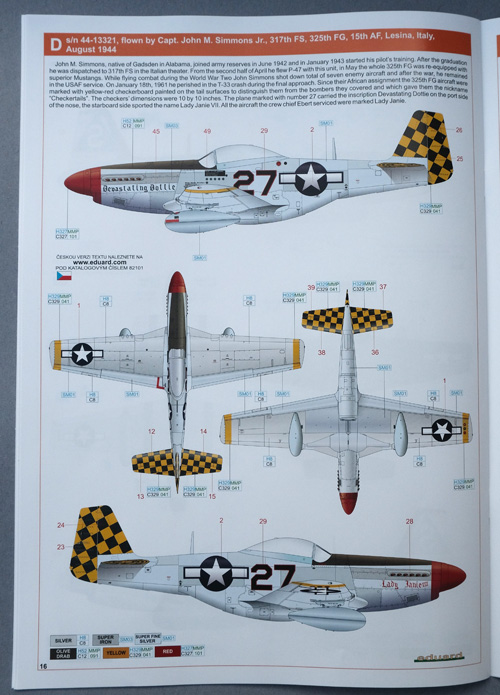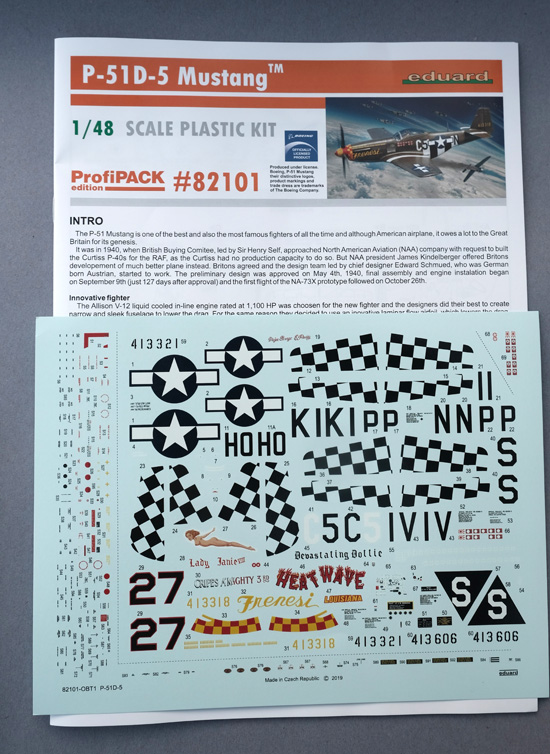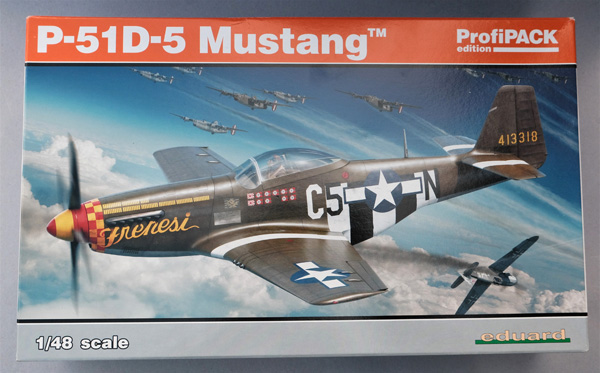
Full Review with Stuart Mackay
A quick note from Geoff C…
It’s great to have another finished project from Stuart M. and here’s a quick look at how it all turned out (well, at least one of the two aircraft) – very well in fact :)…
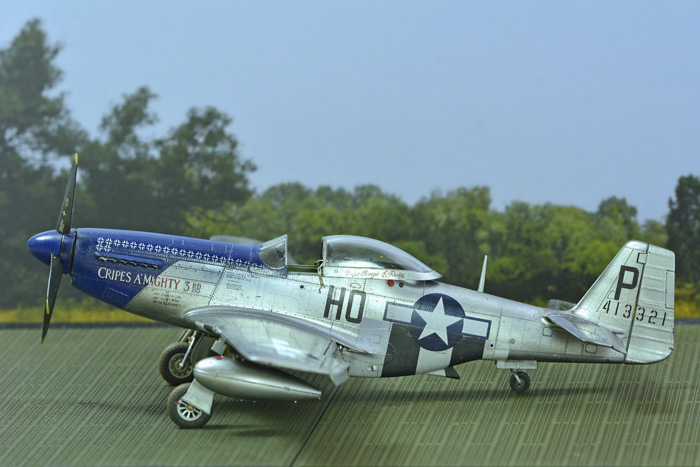
Over to you Stuart…
Introduction
After having completed another of eduard’s “New Generation” WW2 fighters with the Tempest V, I was looking around for another project which combined a WW2 subject and give me some more practical experience with Alclad2 Natural metal finishes. I first used these on the EE Lightning featured in the SMN Subscribers’ Gallery, having seen Geoff use his Mustang mule at SMW in October 2019 for his painted wood (!) paint demos, a decision was made and the Profipack version of the P51-D-5 and two more sets of the “Overtrees” sprue sets that Eduard manufacture were sourced.
The additional sprues are a very low cost way to get maximum value from the beautiful Profipack Cartograf decal sheet which features a total of five aircraft, (consisting of four East Anglian based Eighth AF and one Fifteenth AF aircraft from the Mediterranean
The aircraft
After some fairly intense research, I would soon discover that there is more to the P-51D than I had previously thought. There are minor but important differences between each sub-type, from whether they have a dorsal fin or not, to whether or not they have fabric-covered or metal elevators (which changes the angle of incidence of the horizontal stabilizer), and several other small details. All of these differences have been taken into account by eduard and appears that eduard is pretty well committed to producing kits of the P-51D that will take note of those changes with and without the dorsal fin fillet. The fillets were introduced in late 1944 as a factory and in-field modification to counter the yaw instability effects of reducing the fuselage side area with the P51D-5 blown canopy as opposed to the P51B glasshouse and raised dorsal fuselage. This kit is not a “generic” P-51D as many others are; rather it is modelled on the first P51Ds to enter service in 1944 just in time for D-Day, some of which were later updated with field modification kits.
It is fair to say that their active service could be measured in months, mostly operating from UK prepared airfields with excellent maintenance facilities at hand, therefore, they didn’t suffer the same level of War Weariness, compared to some British types such as Spitfires and Typhoons which were operating from rough forward airfields with very limited maintenance facilities and spares logistics in mainland Europe performing close air support to the advancing Allied Armies and which became very tired-looking in a short space of time.
My initial intention was to model two East Anglian prototypes from Bodney and East Wretham, England – both airfields being very close to my home in Swaffham and being of great local personal interest.
In the end, for this review, I chose to build one Eighth and one Fifteenth AF aircraft featured in the decal sheets. I have a third set of sprues that I plan to build a Green/Medium Sea Grey aircraft from the 357th at Leiston, near Saxmundham on the Suffolk coast.
Both the prototypes are colourful.
“Cripes A’Mighty 3rd” was flown by Major George Preddy Jr, the highest scoring 8th AF ace up until his death on Christmas Day, 1944 during the Battle of the Bulge having been shot down by American AA gunners in a friendly-fire incident mistaking him for a Me109 (!) whilst chasing a FW190.
It was flown from Bodney in late 1944, by the CO of the 328th Fighter Squadron, part of the 352nd Fighter Group, otherwise known as the “Blue Nosed Bastards of Bodney”, a name given to them by non-other than Hermann Goering after seeing them flying over Berlin for the first time escorting the 8th AF Bomber Formations!
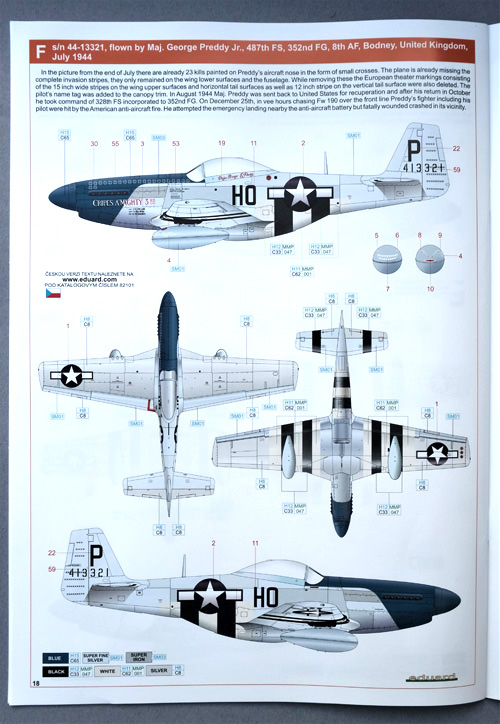
The second aircraft, “Devastating Dottie” was flown by Capt. John Simmons with the 317th Fighter Squadron of the 325th Fighter Group, flying out of Lesina on the Adriatic Coast of Italy. This group was known as the “Checkertail Clan”, again christened by the German Propaganda Ministry, apparently while flying P40s from Libya in N Africa before graduating to P47s and then P51s. They operated from Italy after her capitulation from early 1944 and also with other 15th AF bomber units from temporary bases in Russia. These unusual operations were part of the Eastern Front Diversionary tactics made during the D-Day preparation period in mid-1944. Their main hunting area was southern Germany, Austria, Hungary, Czechoslovakia and Romania. During their Mustang era , the Checkertail Clan flew 246 missions with the loss of 75 of their own aircraft against a tally of 534 & 52 probable enemy aircraft shot down, 281 aircraft destroyed & 264 actual plus 137 probable locomotives in ground strafing actions. Capt. Simmons survived WW2 and Korean conflicts but was sadly lost in a training incident in 1961.
